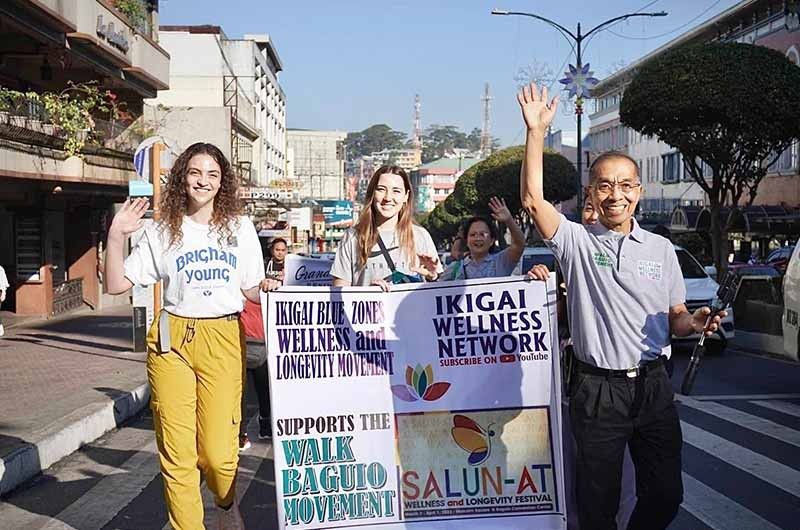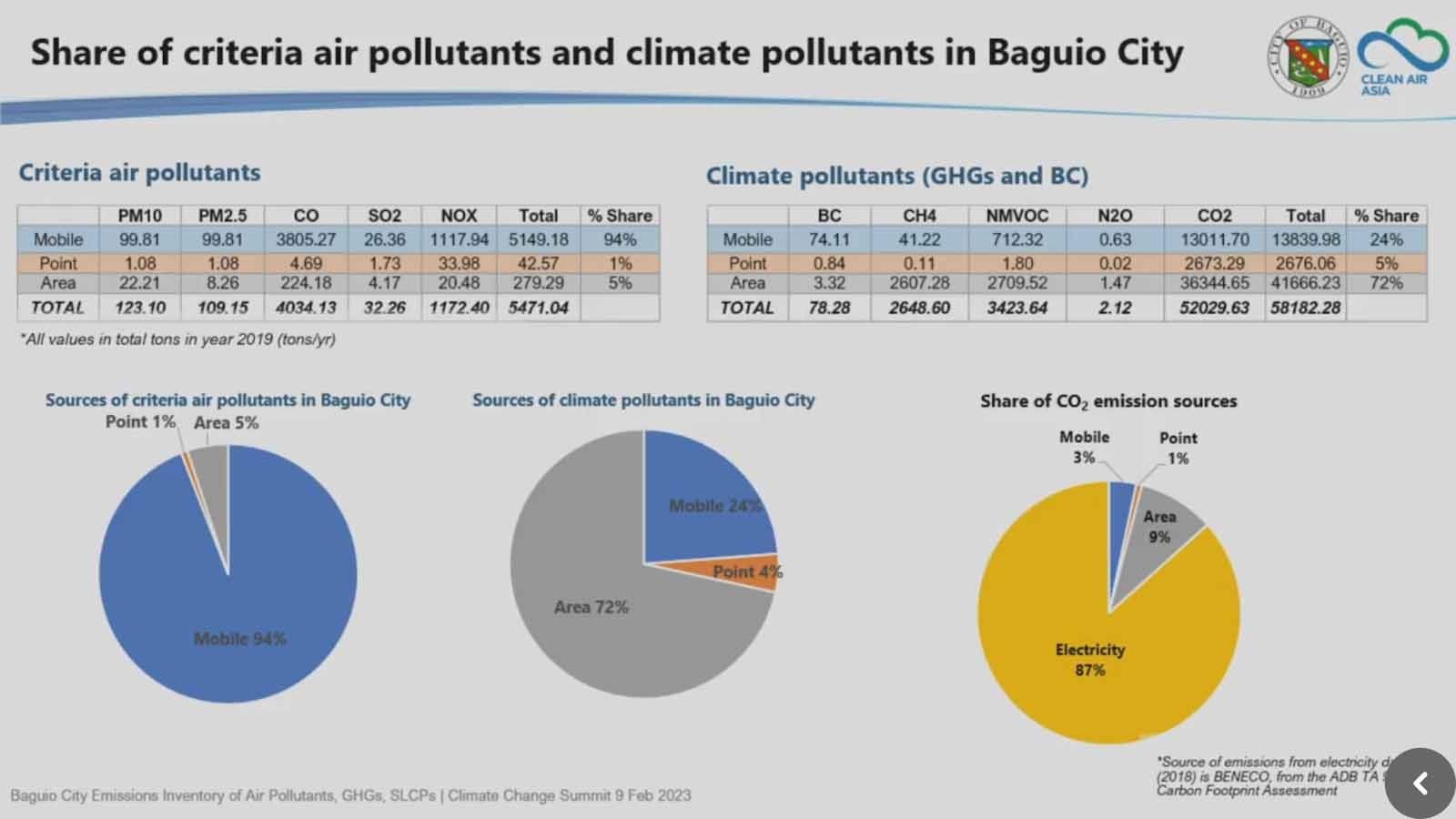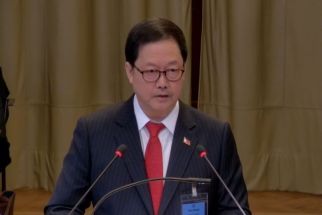Baguio strides towards walkability, active mobility in climate change fight

BAGUIO, Philippines — If anyone ever thought that long walks are just for the young, then Danilo and Florence Quinto will surely prove them wrong. They regularly stroll along a closed-off Session Road, Baguio’s most prominent thoroughfare.
In their advanced age, the Quintos are staunch advocates for walking and an inspiration to younger people to get moving.
Florence, 57, has long made walking a priority for going around the city. “Since 1987 naglalakad na ako dito sa Baguio City, ‘yun lang hindi pa advocate sa walkable city ang tawag,” she said.
(Since 1987, I have already been walking in Baguio City, but then, we were not yet called walkable city advocates.)
Danilo, 72, founder of the Blue Zones Wellness and Longevity Movement, believes walking should be integrated into urban lifestyles.
“Walking is one of the best and easiest movement exercises, which should be promoted in urban communities,” he said.
In August 2019, the lower part of Session Road was first closed off to motor vehicles for a six-month trial. Four years later–and after a hiatus during the COVID-19 pandemic–the area remains a pedestrian-only zone every Sunday.
It has also become a highly anticipated event and a weekly habit for many, including the Quintos. For the local government, the activity is even seen as an important measure to combat climate change.
However, could this weekly habit go beyond Session Road and pave the way for the chronically congested Baguio’s transformation into a walkable and more sustainable city?
More vehicles, more pollutants

The closure of Session Road is one of the city’s efforts to reduce greenhouse gas emissions, as stated in Baguio City’s Local Climate Change Action Plan (LCCAP) for 2020 to 2030.
“The one-way traffic scheme is intended to decongest Session Road, improve the air quality in the area, and encourage residents and tourists alike to walk in line with the City’s program on developing a healthy environment,” a portion of the LCCAP read.
Baguio City had 32,686 road vehicles based on 2021 data obtained from the City Planning, Development and Sustainability Office (CPDSO).
The transport sector accounted for 24% of the city’s climate pollutants, according to the 2019 Emission Inventory of the group Clean Air Asia. Ninety-four percent of the air pollutants originated from mobile sources, specifically passenger cars, utility vehicles, motorcycles, buses, trucks, and jeepneys.
Steven Bruce Layugan, an architect at the CPDSO, said that various administrations of the Baguio City local government have made multiple attempts to convert Session Road into a more pedestrian-priority area.
According to Layugan, the initiative started as a way for the city’s small businesses to showcase their products and services and increase their revenue. Later on, it became part of the city’s plans to inject new life to its environment and culture.
“The promotion of walkability will help improve the air quality. At the same time, ease vehicular congestion by having that modal shift into low carbon and active transport,” he said.
Session Road’s closure also allows pedestrians to do busking, cultural performances, or just simply walk. Layugan said that Session Road has become a “canvas for the socio-cultural sector.”
“People from all walks of life get to feature and express themselves from chalk art, street dancing, cosplay, cultural dances, and photography,” he said.
Pedestrianization: Not a walk in the park

While Baguio resident and former Philippine delegate to the United Nations Framework Convention on Climate Change Lot Felizco welcomes any measure to reduce fossil fuel emissions, she believes that pedestrianization should not be limited to the famous tourist spot merely as a means to boost tourism.
“Unless pedestrianization is linked to a wider strategy to reduce emissions and provide cleaner options for the riding public, then the effects on emissions reduction and climate change will be minuscule,” Felizco said.
According to Layugan, walkability in Baguio City is still in its “infancy stage.” A walkable city is where people can walk safely and conveniently from one place to another and access their basic needs.
Establishing a walkable Baguio still has a lot of roadblocks to clear.
“Convincing the people of Baguio to shift their conventional mobility and transport modes can only happen once they will see that the use of active transport and low carbon mobility has much more benefits as compared to using private cars,” Layugan said.
Layugan also mentioned the challenge with the city’s topography, where the moderately flat to rolling hilly terrain would involve a lot of infrastructure changes.
Despite these challenges, Baguio was recognized as among the country’s “Most Bicycle-Friendly Cities” for 2023 by mobility advocates.
The Baguio LCCAP also includes specific budgetary allocations for the improvement of pedestrian lanes and sidewalks in order to “promote Baguio as a walkable city and deter the use of vehicles.”
For Danilo, Burnham Park, Military Cutoff, and streets going to Pacdal, Mines View Park, the Mansion House, Camp John Hay and the Baguio Country Club are the most walkable streets in the city.
Meanwhile, these pedestrian-friendly streets are important not only for Florence, but for all of the Quinto clan. She pins her hope that a walkable Baguio would mean a safer and less polluted city.
“Mahalaga sa aming pamilya, napaka-importante na maging walkable lahat ng parte ng Baguio, walang stress sa traffic,” she said. “Hopefully later, kung sana mababawasan ang mga sasakyan, less pollution.”
(“For our family, it is very important that all parts of Baguio become walkable, no stress in traffic,” she said. “Hopefully later, there will be less cars and pollution.”)
--
This story was supported by Climate Tracker Asia and the U.S. Embassy in the Philippines.
Jerson Kent Danao, 22, is a communication student at the University of the Philippines Baguio.
- Latest

























